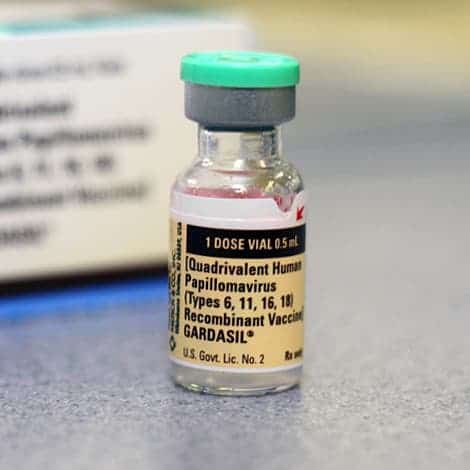Ten years ago, the first cervical cancer vaccine was administered in Australia. Today, the success of the vaccine is undeniable, as cervical cancer rates have fallen by 50%.

Most cervical cancers are associated with human papillomavirus (HPV), a sexually-transmitted infection. This means that unlike other cancers, HPV can be transmitted sexually. It’s not the only way it can develop, but it’s the most common way. Ten years ago, the vaccine’s creator, Ian Frazer, chairman of Translational Research Institute Australia, started a long battle to defeat cervical cancer – and while he hasn’t fully succeeded yet, he’s well on track.
The human papillomavirus vaccine has been rolled out across 130 countries. The HPV vaccine is recommended for girls and boys ages 11 or 12, although it can be given as early as age 9. The idea is to administer it before any sexual encounters. The vaccine protects not only against most types of cervical cancer but also against cancers in the throat and mouth – both in men and in women.
“It helps not only control cervical cancer but also the oropharyngeal cancer – the cancers inside the mouth that are caused by these viruses,” Prof Frazer, chief executive of the Translational Research Institute, told the BBC.
“If we vaccinate enough people we will eliminate these viruses because they only infect humans. And in Australia there’s already been a 90% reduction in infections in the 10 years the programme has been running.”

This battle is extremely important. HPV is a very common virus, though most people manage to rid themselves of it naturally, without even knowing they contacted it. However, some people can’t eliminate it themselves, and in these cases, there’s a good chance of a cancer emerging.
“One in two of us will get it in our lifetime so it is extremely common infection,” he said. “The chances of you getting a cancer if you have the virus is about one in 100. Most of us get the virus, we don’t know we have it, we get rid of it ourselves and we never knew we have it but of course while we have it we are infectious and can pass it on to other people.”
When you do the math on all of that, you start to get a feeling how dangerous the virus can actually be. In fact, a significant proportion of all cancer worldwide is caused by such viral infections, and the vaccine could make a huge difference.
“Five per cent of all cancers worldwide are caused by papillomavirus infection, cervical cancer is the big one, but there are also some cancers in the throat and mouth we recognise are being increasingly caused by these viruses and then on top of that are a number of rarer cancers caused by these viruses,” he said. “About 20 per cent of all cancers are caused by a virus infection and about a quarter of those are caused by papillomavirus.”
So far, 170 million vaccine doses have been given out, and new cases of cervical cancer have been halved. However, not all countries have been equally receptive. Prof Frazer makes a special mention of the United States, where people are still against vaccination, even though it could save numerous lives.
“In countries like the US where the vaccine isn’t so widely taken up, that’s a little bit disappointing because cervical cancer still kills several thousand women in the US,” he said.
The next step is to take the vaccine (which currently deals with two common strains) and enable it to target seven more common strains. If the attempt is successful, then there’s a good chance to get rid of such cancers entirely. Prof Frazer, who has dedicated his life to destroying HPV cancers seems highly optimistic:
“If we get that rolled out we will eventually get rid of all cancers that get caused by this virus.”


